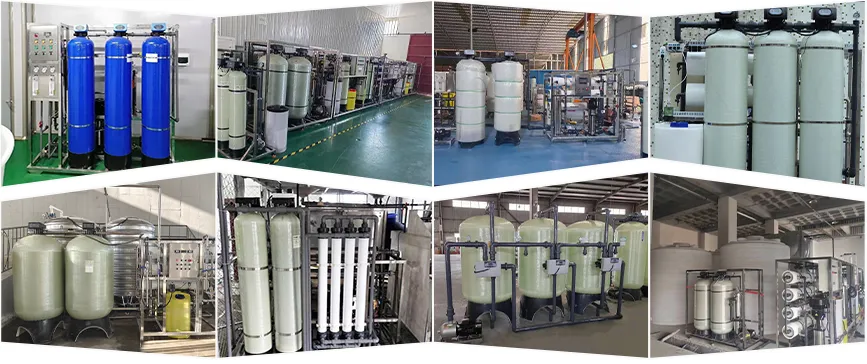loading...
- No. 9, Xingyuan South Street, Dongwaihuan Road, Zaoqiang County, Hengshui, Hebei, China
- admin@zjcomposites.com
- +86 15097380338
- Welcome to visit our website!
glass fiber reinforced polymer rebar
Glass Fiber Reinforced Polymer Rebar Revolutionizing Construction
In the world of construction, the materials used play a crucial role in determining the durability, strength, and longevity of structures. Recently, a new contender has emerged in the form of Glass Fiber Reinforced Polymer (GFRP) rebar, offering significant advantages over traditional steel reinforcement bars. This innovative material is transforming how engineers and architects approach construction projects, especially in challenging environments.
What is GFRP Rebar?
Glass Fiber Reinforced Polymer rebar is a composite material made from a polymer matrix reinforced with glass fibers. This combination results in a product that not only possesses remarkable tensile strength but also exhibits unique properties such as resistance to corrosion, lightweight characteristics, and electrical insulation. Traditional steel rebar has long been the standard for reinforcing concrete, but the limitations of steel—particularly its susceptibility to rust and corrosion—have led to a demand for alternatives. GFRP rebar presents a compelling solution.
Advantages of GFRP Rebar
1. Corrosion Resistance One of the most significant advantages of GFRP rebar is its resistance to corrosion. In environments where concrete is exposed to salinity, chemicals, or moisture, traditional steel rebar can quickly deteriorate, leading to structural weaknesses and costly repairs. GFRP, on the other hand, remains unaffected by these conditions, ensuring the integrity of the structure over time.
2. Lightweight GFRP rebar is considerably lighter than steel, making it easier to handle and install. This lightweight nature can lead to reduced transportation costs and less strain on labor resources. Moreover, the decreased weight can result in lower overall construction costs, especially in large-scale projects where heavy lifting is required.
3. High Strength-to-Weight Ratio Despite its lightweight nature, GFRP rebar exhibits a high strength-to-weight ratio. This means that it can provide equivalent or superior strength compared to steel rebar while being significantly easier to work with. The use of GFRP allows for thinner and lighter structures without compromising on safety.
glass fiber reinforced polymer rebar

4. Non-magnetic and Non-conductive GFRP rebar is non-magnetic and non-conductive, which makes it an ideal choice for applications in sensitive environments such as hospitals, laboratories, and data centers. In such places, interference from magnetic fields or electrical conductivity can pose risks, and GFRP mitigates these concerns effectively.
5. Durability Beyond its corrosion resistance, GFRP rebar is known for its durability. The long lifespan of GFRP can lead to fewer maintenance needs and longer intervals between repairs, ultimately resulting in lower lifecycle costs for structures.
Applications of GFRP Rebar
The applications of GFRP rebar are numerous and varied. It is increasingly being used in bridges, parking garages, marine structures, and even residential buildings. In precast concrete elements, GFRP can enhance performance while reducing weight and construction time. Additionally, areas prone to seismic activity can benefit from the flexibility and strength of GFRP, providing enhanced performance under stress.
Challenges and Considerations
Despite its many advantages, GFRP rebar is not without challenges. The initial material cost can be higher than that of traditional steel rebar, which may deter some project stakeholders. However, the long-term savings resulting from reduced maintenance and increased longevity often justify the higher upfront investment. Additionally, the manufacturing process for GFRP is still being optimized, and further research is ongoing to improve its properties and applications.
Conclusion
Glass Fiber Reinforced Polymer rebar represents a significant advancement in construction technology. By addressing the limitations of traditional steel reinforcement, GFRP offers a viable alternative that enhances the durability, efficiency, and sustainability of structures. As more architects and engineers discover the benefits of GFRP, it is likely to become a standard material in the industry, paving the way for a new era of innovative construction practices. The future of building materials is bright, and GFRP rebar is at the forefront of that evolution, promising stronger and more durable structures for generations to come.
-
GRP Structures: The Future of Lightweight, High-Performance EngineeringNewsJun.20,2025
-
FRP Water Tank: High-Performance Storage for Corrosive and Clean Water SystemsNewsJun.20,2025
-
FRP Square Tube: The New Industry Standard for Chemical and Structural ApplicationsNewsJun.20,2025
-
FRP Pultruded Profiles: The Ultimate Choice for Lightweight Structural StrengthNewsJun.20,2025
-
FRP Handrails: The Safer, Smarter, and Stronger Choice for Modern InfrastructureNewsJun.20,2025
-
FRP Grating: The Smart Solution for Durable, Lightweight Industrial FlooringNewsJun.20,2025
-
Why Choose a Galvanized Water Tank for Your Storage NeedsNewsMay.21,2025
